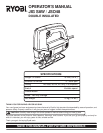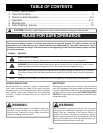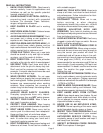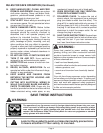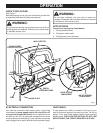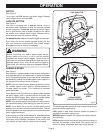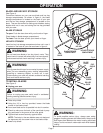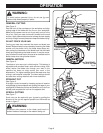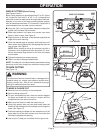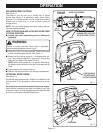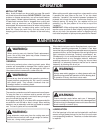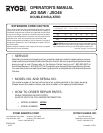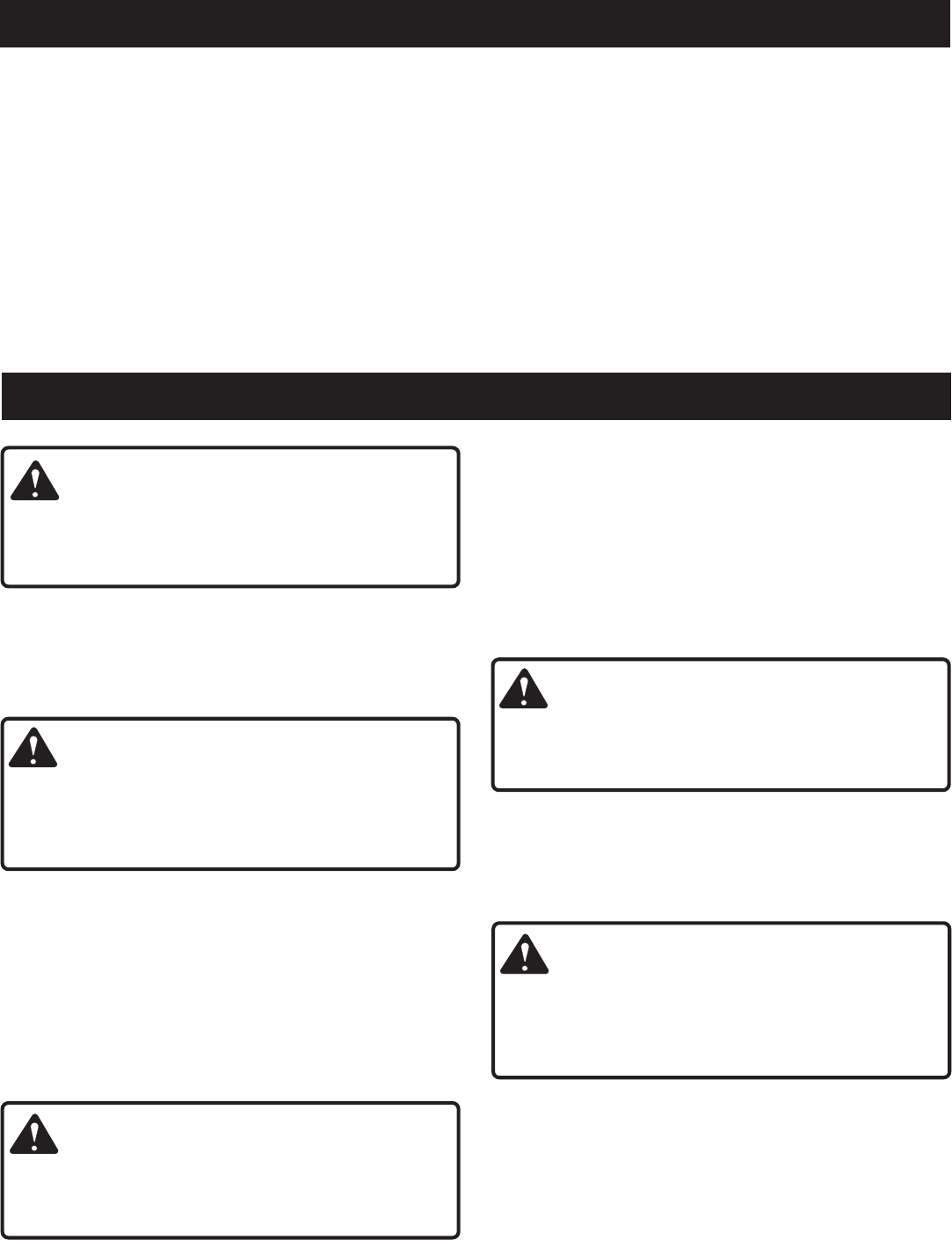
Page 11
OPERATION
METAL CUTTING
Many kinds of metals can be cut with your saw. Be careful
not to twist or bend the blades. DO NOT FORCE. If the blade
chatters or vibrates excessively, use a finer-tooth blade or
higher speed. If blade heats excessively, use lower speed.
If blade teeth become filled or clogged when cutting soft
metals, such as aluminum, use a coarser-tooth blade or
lower speed. We recommend use of oil when cutting metals
to keep blades cool, increase cutting action, and prolong
blade life. Clamp the work firmly and saw close to the
clamping point to eliminate any vibration of the work being
cut.
When cutting conduit, pipe or angle iron, clamp work in a vise
if possible and saw close to the vise. To cut thin sheet
materials, "sandwich" the material between hardboard or
plywood and clamp the layers to eliminate vibration and
material tearing. By doing this, the material will be cut
smoothly. Lay out your pattern or line of cut on top of the
"sandwich".
IMPORTANT – When cutting metal, keep exposed portion of
saw bar clean and free of metal chips by wiping frequently
with an oily cloth. Use extreme caution in disposing of oily
cloth after completion of job to prevent potential fire hazard.
EXTENSION CORDS
The use of any extension cord will cause some loss of power.
To keep the loss to a minimum and to prevent tool from
overheating, use an extension cord that is heavy enough to
carry the current the tool will draw.
A wire gage size (A.W.G.) of at least 16 is recommended for
an extension cord 50 feet or less in length. When working
outdoors, use an extension cord that is suitable for outdoor
use. The cord's jacket will be marked WA.
WARNING:
Check extension cords before each use. If damaged,
replace immediately. Never use tool with a damaged cord
since touching the damaged area could cause electrical
shock resulting in serious injury.
LUBRICATION
All of the bearings in this tool are lubricated with a sufficient
amount of high grade lubricant for the life of the unit under
normal operating conditions. Therefore, no further lubrication
is required.
WARNING:
Keep extension cords away from the cutting area and
position the cord so that it will not get caught on lumber,
tools, etc., during cutting operation.
WARNING:
When servicing use only identical Ryobi replacement
parts. Use of any other parts may create a hazard or
cause product damage.
GENERAL
Avoid using solvents when cleaning plastic parts. Most
plastics are susceptible to damage from various types of
commercial solvents and may be damaged by their use.
Use clean cloths to remove dirt, carbon dust, etc.
WARNING:
Do not at any time let brake fluids, gasoline, petroleum-
based products, penetrating oils, etc. come in contact
with plastic parts. They contain chemicals that can
damage, weaken, or destroy plastic.
When electric tools are used on fiberglass boats, sports cars,
wallboard, spackling compounds, or plaster, it has been
found that they are subject to accelerated wear and possible
premature failure, as the fiberglass chips and grindings are
highly abrasive to bearings, brushes, commutators, etc.
Consequently it is not recommended that this tool be used
for extended work on any fiberglass material, wallboard,
spackling compounds, or plaster. During any use on these
materials, it is extremely important that the tool is cleaned
frequently by blowing with an air jet.
WARNING:
Always wear safety goggles, or safety glasses with side
shields during power tool operation or when blowing dust.
If operation is dusty, also wear a dust mask.
MAINTENANCE



